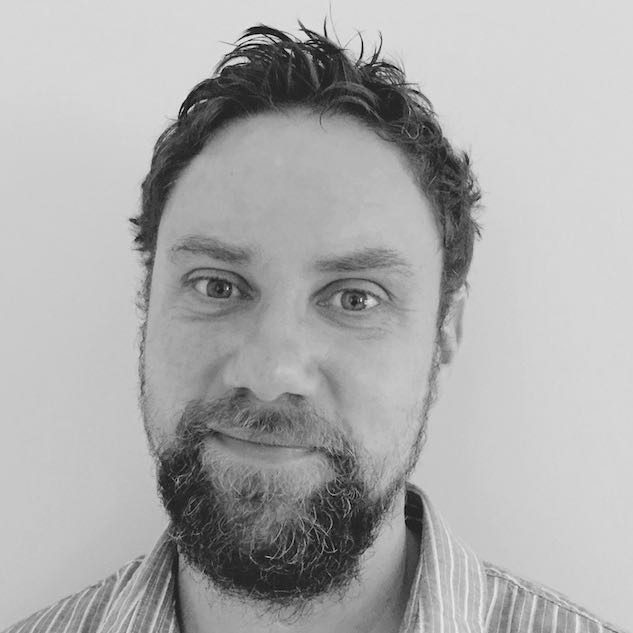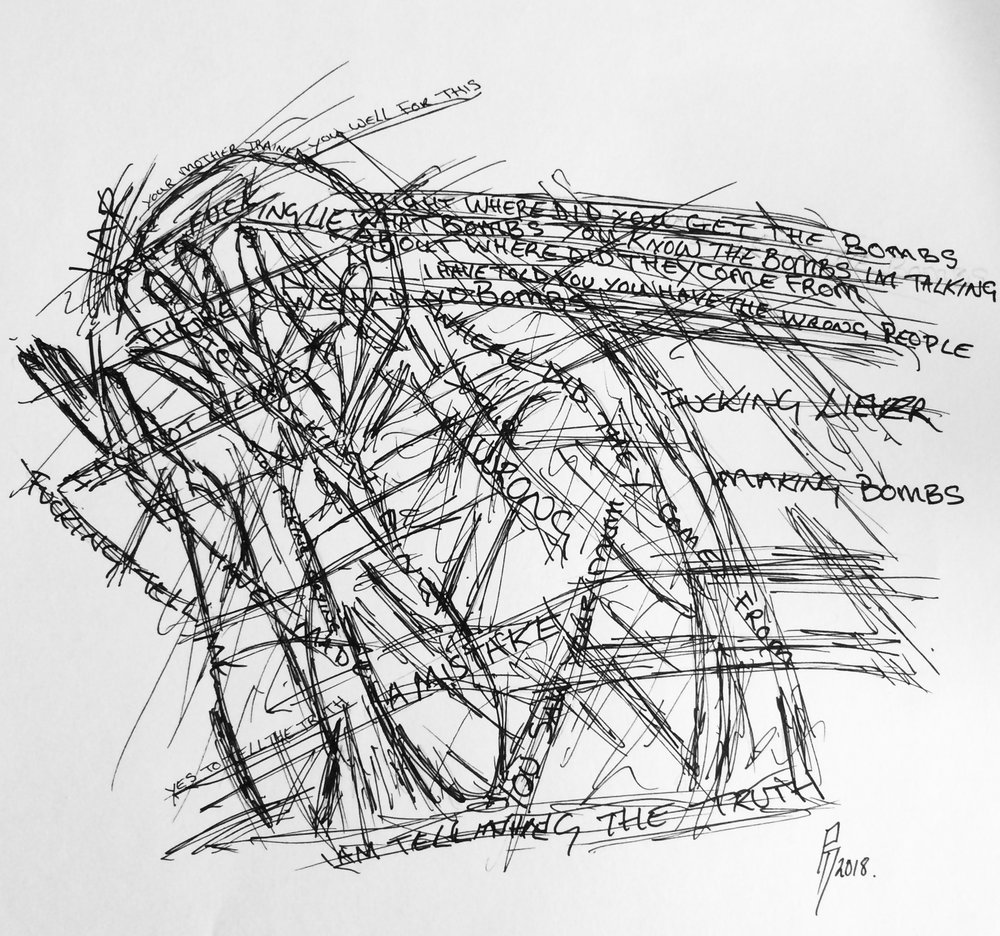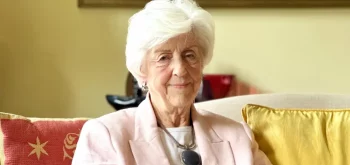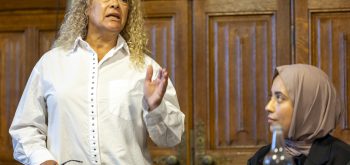‘I feel like a war reporter chronicling some huge battle,’ says Susan Goldsmith. A veteran investigative journalist based in Portland, US, Goldsmith has spent the last eight years looking into perhaps the most contentious intersection of medicine and law: shaken baby syndrome.
Her new film The Syndrome, directed by her cousin Meryl Goldsmith, claims to ‘expose the junk science behind an unprecedented criminal justice crisis’.
It is reckoned that every year there are around 1,500 babies diagnosed in the US with a combination of the three symptoms (known as ‘the triad’) – swelling of the brain, bleeding between the skull and brain, and bleeding in the retina – and which was understood to be exclusively characteristic of shaken baby syndrome.

Susan Goldsmith (on the right) – with film-maker and cousin Meryl Goldsmith
‘There are people in prison whose convictions are based on science that has been disavowed,’ the US academic Professor Deborah Tuerkheimer tells Goldsmith in the film.
In a 2009 paper for the Washington University Law Review, Prof Tuerkheimer said that the symptoms, in their ‘classic formulation’, were as close to ‘a medical diagnosis of murder’ as it was possible to imagine. ‘Prosecutors use it to prove the mechanism of death, the intent to harm and the identity of the killer,’ she wrote.
But Tuerkheimer went on to argue that the science has since shifted and that the symptoms might well have natural causes. The US courts hadn’t caught up with the science though and, she reckoned, the result was ‘a criminal justice crisis’.
‘Since I started working on this in 2008, it’s been really picking up steam,’ Goldsmith tells me. ‘There is an estimated 250 prosecutions every year.’ Tuerkheimer, formerly a prosecutor in the Manhattan District Attorney’s office, reckons that there could be as many 1,000 innocent people may be in US prisons now convicted on the basis.
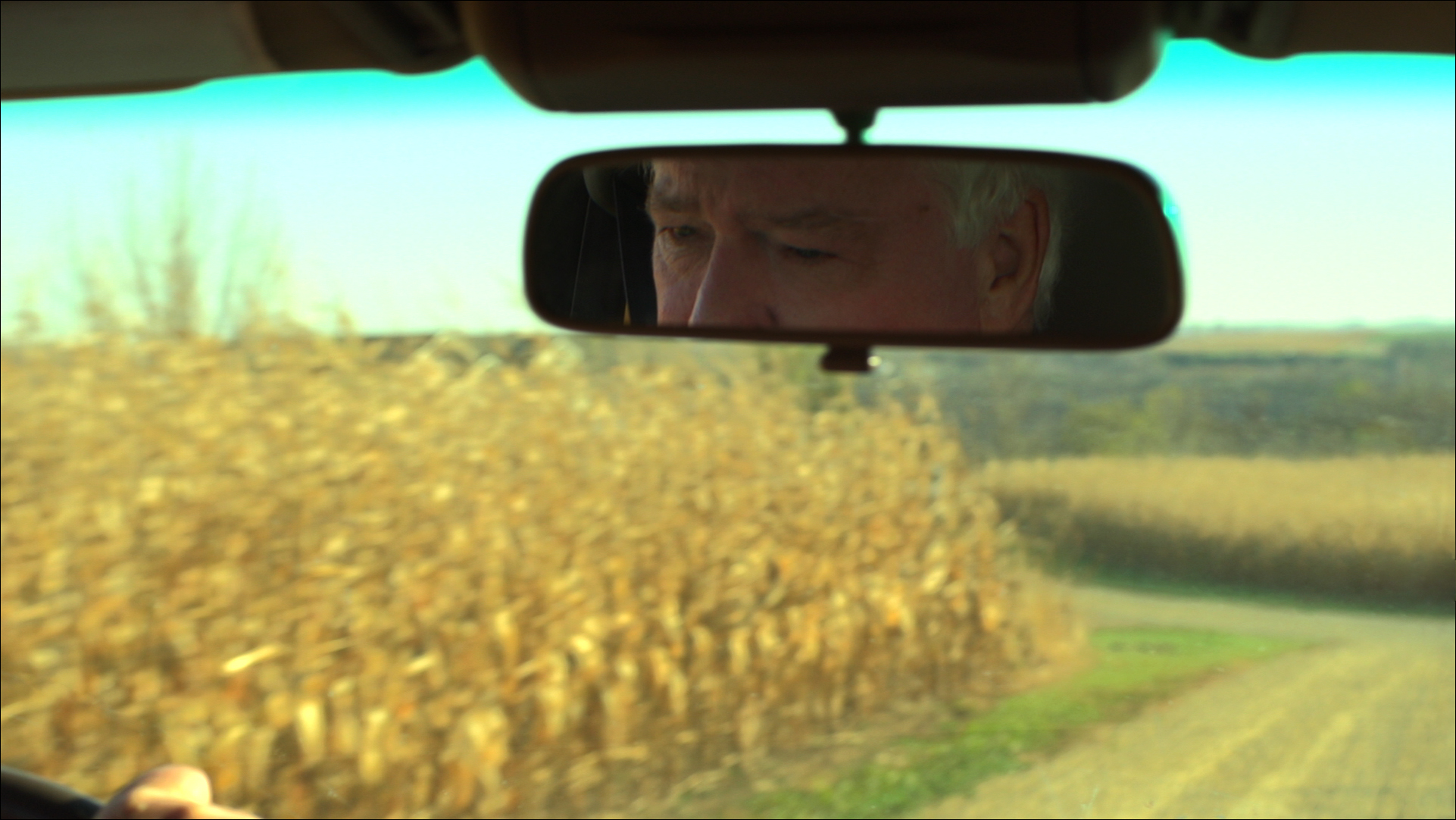
Dr. John Plunkett, forensic pathologist and leading critic of shaken baby syndrome – from the film The Syndrome
Challenging the mainstream consensus on either side of the Atlantic is the courts is risky business. The Justice Gap recently reported on Dr Waney Squier, the world-renowned neuropathologist struck off by the disciplinary arm of the General Medical Council in March this year (here). Leading human rights lawyers including Michael Mansfield and Clive Stafford Smith accused the GMC’s disciplinary tribunal of conducting itself like a ‘21st-century inquisition’.
‘Nobody will touch us with a 10 foot pole. We are radioactive,’ Susan Goldsmith tells me. The cousins have had their film turned down by a number of film festivals including Sundance after threats of legal action. So far the film has shown at 14 film festivals across the US and is available on demand though iTunes and Amazon in the US. If you want see the film in the UK, you can download it at thesyndromefilm.com.
Susan Goldsmith has won numerous awards for her campaigning journalism. Her reporting at The Oregonian resulted in the state legislature passing laws to protect children in foster care. The new film is self-funded. ‘My newspaper would not let me do the story. They said it was too controversial,’ she says.
Goldsmith isn’t just taking on the medical establishment. The journalist also claims to have discovered a link between three physicians who pioneered shaken baby syndrome and a mass hysteria that infected the US justice system with zero evidential base back in the 1980s: the so-called ‘satanic ritual abuse scandal’.
The world is watching
What does the journalist make of the GMC’s decision to strike off Squier who had appeared in courts on both sides the Atlantic? ‘It’s really scary. The strategy appears to be to take Waney out,’ she says.
Goldsmith points to the treatment of other UK-based experts such as Dr Irene Scheimberg and Dr Marta Cohen (see BBC report Met accused of ‘campaign’ against shaken baby witnesses). ‘This campaign to silence the critics is the theme of our film – and it extends to England as well,’ she says.
In a letter to the Guardian, Goldsmith wrote that the ruling ‘sent a message to all who dare question this dogma: speak up and we will ruin your career. The world is watching.’
Goldsmith notes that ‘shaken baby syndrome’ is a US export. The Syndrome includes footage of a US conference for international experts on shaken baby cases six years ago that also featured in a BBC Panorama special from March this year.
That program shadowed Waney Squier in the months leading up to her being struck off. An American lawyer, Heather Kirkwood told Panorama that the doctor’s problems could be traced back to that conference. According to Kirkwood, ‘a co-ordinated plan’ was hatched to shut down critics of shaken baby syndrome in the courts in the UK. Panorama managed to obtain the conference notes of a detective inspector from the Metropolitan police under the freedom of information, in which he talked about it being ‘inconceivable’ that the defence will be able to deploy Squier and anther expert in such cases.
‘They created a fake science’
The most explosive aspect of The Syndrome is likely to be the film-makers’ claim that three of the leading proponents of shaken baby syndrome – all members of the American Academy of Pediatrics’ committee of child abuse and neglect – were previously enthusiastic advocates of what became known as a ritual ‘satanic abuse panic’ of the 1980s.
That hysteria began with a single allegation of abuse by a mother whose child attended the McMartin Preschool near Los Angeles in 1983 and led to hundreds of allegations of satanic abuse and the longest criminal case in US history. After six years of lurid, bizarre and false allegations – flying witches, baby sacrifices, children drinking blood etc – all charges were dropped.
Goldsmith sees parallels between the two issues. ‘Satanic panic was kicked off with the sensational extravaganza that was McMartin. It was like OJ,’ she says.
‘Doctors were going into court testifying that there was medical evidence of abuse and a science was born to make that look credible. They developed a literature and an entire scientific edifice for this bullshit which looked very credible.’
Susan Goldsmith
That is ‘exactly what happened’ with the early development of shaken baby syndrome, the journalist argues. According to Goldsmith, shaken baby syndrome had its ‘debut’ before a global press in the trial of Louise Woodward. In 1997, the British au pair was released by the trial judge despite her conviction for the involuntary manslaughter of eight-month-old Matthew Eappen in Massachusetts. She had been charged with murdering him. According to Goldsmith, the case put shaken baby syndrome ‘into the cultural conversation’.
‘In shaken baby syndrome, they created a much more seemingly robust literature for propping up the syndrome,’ she says. ‘They created a fake science. The hysteria has convinced the courts and juries that it is a legitimate science.’
So what’s the motivation for the medical establishment buying into junk science? Follow the money, Goldsmith replies. Her film argues that an entire industry has been spawned around shaken baby syndrome.
At one point the documentary, Patrick Barnes, chief of pediatric neuroradiology at the Children’s Hospital at Stanford University, tells Goldsmith: ‘We thought we were helping by uncovering these other medical conditions that can look like abuse, but are not. It actually threatens the entire shaken baby syndrome working group and industrial complex.’
In the US there is a positive legal duty on doctors to report symptoms to the authorities and that means, according to Goldsmith, a nightmarish experience for those parents who are innocently bringing in poorly kids to hospitals.
‘When you take a sick child to a hospital, you’re not thinking about your legal rights. You are not thinking: “Am I going to incriminate myself?”’ Goldsmith says. ‘But, actually, the parents are dealing with proxies for the police. If there is a suspicion of abuse – and the doctors diagnose it – no social worker is ever going to question it. The doctors call in the social workers, there is a liaison at the hospital and many of these hospitals have the contract to do the forensic interviews with the police departments. The interwoven relationships are problematic.’
In the UK, just over 10 years in ago the then Attorney General, Lord Goldsmith conducted a seven-month review of 88 shaken baby cases after the Angela Canning case. In his view, just three of those convictions needed to be looked at again by the courts. In her 2009 paper, Prof Tuerkheimer was sceptical about the review noting that admissions by defendants were treated as corroborative of the diagnosis.
The CPS, in its 2011 guidance, dropped the ‘Shaken Baby Syndrome’ tag because of its ‘emotive connotations’ and noted, ‘more importantly’, that it did ‘not adequately describe the range of causes of head injuries’. According to the guidance, simply the presence of the triad would no longer be considered enough to show that a dead infant had suffered ‘shaken baby syndrome’.
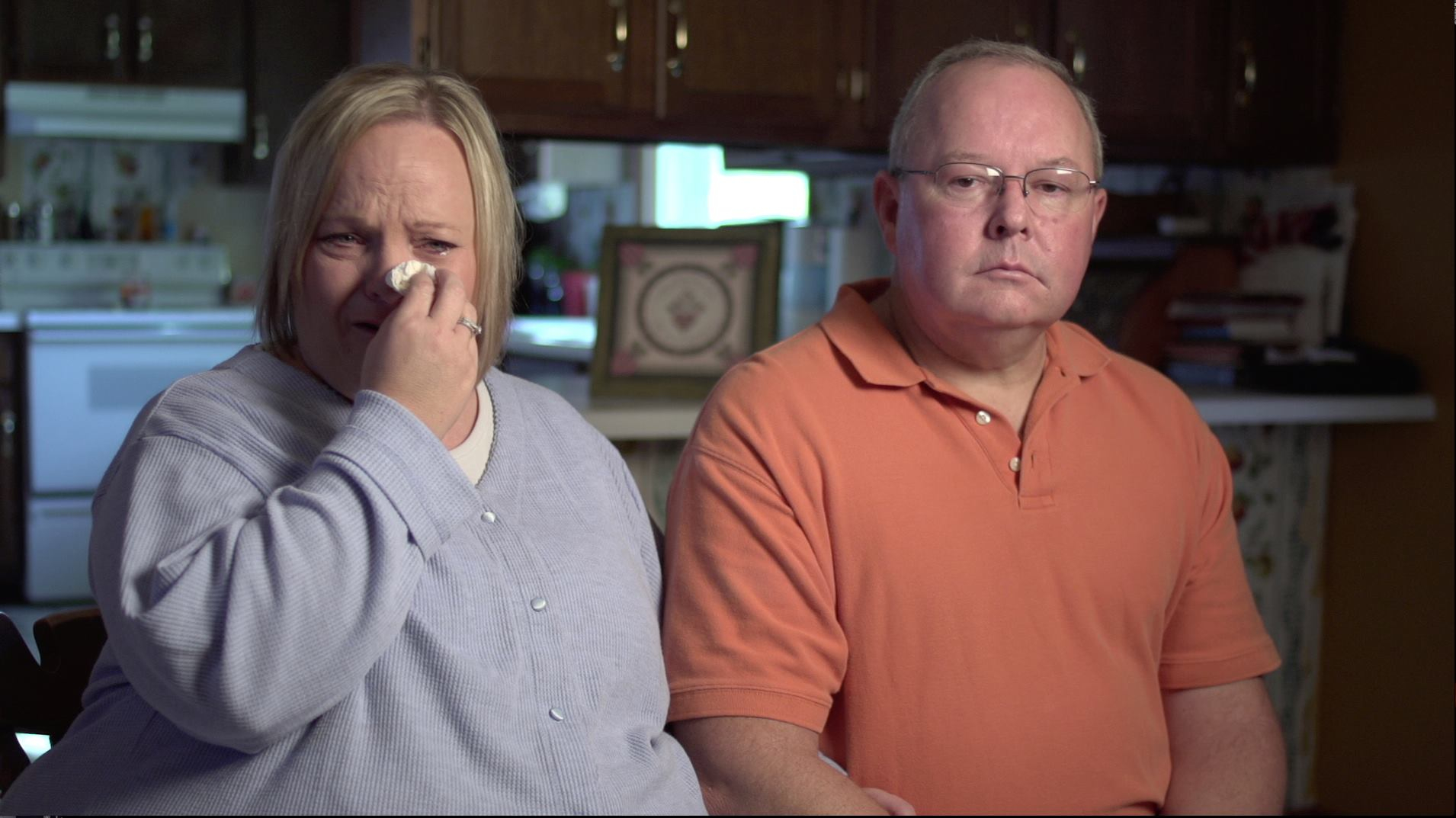
Kathy Hyatt – with husband Kevin – was arrested for child abuse. She was found not guilty. From The Syndrome
Black and white
‘Nothing is easy when it comes to this area,’ reflected Dr Geoff Debelle, a consultant paediatrician at Birmingham Children’s hospital at the start of the recent Panorama. For every 100 babies with the triad of symptoms, he reckoned that on average doctors found further evidence of abuse in 85 cases. Were there cases that kept him awake at night? Yes, he replied. Why? ‘Am I wrong? How sure can I be? Could it be something else,’ he replied.
The Syndrome documentary seeks to do two things: to tell the story of those physicians who, in Goldsmith’s view, bravely speak out to challenge the existence of shaken baby syndrome; and to pin the blame on the three doctors from the American Academy of Pediatrics’ child for propagating a pseudoscience.
Goldsmith says: ‘I spent a lot of time figuring out how shaken baby syndrome got into the medical literature and the criminal justice system, trying to nail down and identify the causes and not just write it off as the fault of the “the system”.’
Prior to the film’s release and ahead of last year’s Kansas International Film Festival, a group of paediatricians, pathologists, neuropathologists and physicians (including members of the American Academy of Pediatrics) wrote to the organizers.
They accused the documentary of being ‘a gross and deliberate mischaracterization’ of the debate and threatened legal action. In particular, they said that there was ‘no support to the incendiary claim that “shaken baby syndrome, a child abuse theory responsible for hundreds of prosecutions each year in the US, is not scientifically valid. In fact… it does not even exist”. On the contrary, there is extensive medical literature substantiating the evidence base and clinical validity of medical diagnosis of abuse of head trauma.’
‘As pediatric experts with decades of experience diagnosing and treating infant who die or suffer traumatic brain injury at the hands of caregivers, we are concerned that The Syndrome disseminates false and misleading information that puts infants lives at risk.’
Letter to the Kansas International Film Festival
I ask Goldsmith if her documentary isn’t contributing into an already over-heated and polarized debate. Isn’t there a case for a more nuanced approach? ‘I’m not saying you shouldn’t be fair and balanced but, you know, up to a certain point. It is like covering satanic panic and saying: “Well, there is something to be said about Satan and daycare centres”. There really was nothing there.’
‘It might well be there are people who abuse their kids who get away with it and say: “It was a fall”. But in many, many of these cases, the courts have gotten innocent people. We have a big nightmare on our hands.’

